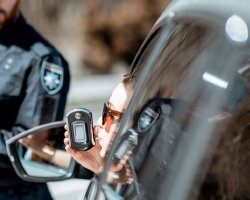UK Protects their Population by Setting Standards for Drugged Driving

Everyone knows that there are legal limits for driving while drunk. But now some nations and US states are working hard to determine what the legal driving limits for drug use should be. After all, the National Highway Transportation Safety Administration (NHTSA) has documented the fact that many drugs of abuse make it harder or even impossible for a person to continue to drive competently after use.
In the NHTSA documentation for marijuana, the agency describes the effects of using marijuana before driving: “The short-term effects of marijuana use include problems with memory and learning, distorted perception, difficulty in thinking and problem-solving, and loss of coordination. Heavy users may have increased difficulty sustaining attention, shifting attention to meet the demands of changes in the environment.”
When a person takes the club drug Ecstasy (MDMA), the NHTSA noted these impairments occurred in some drivers: “Speeding, jumping red lights, hallucinations/delusions, and a sense of detachment in five impaired driving cases.”
In the US, there are laws in place that permit law enforcement personnel to ticket or arrest a person for impaired driving. They don’t need to have the exact measurement of drugs in the person’s body. But with the advent of medical marijuana and legalized recreational marijuana, some people feel it is essential to be able to set a standard in place for when a person is too intoxicated to drive safely.
When the UK recently set limits for what determines intoxicated driving, they didn’t just list marijuana, they determined the limits for 16 drugs.
µg/L refers to micrograms per liter of blood. A microgram is a millionth of a gram.
Illicit drugs:
1. Benzoylecgonine (a product of cocaine breakdown in the body) 50 µg/L
2. Cocaine, 10 µg/L
3. THC, the active ingredient in marijuana, 2 µg/L
4. Ketamine, 20 µg/L
5. LSD, 1 µg/L
6. Methylamphetamine, a strong and addictive stimulant similar to methamphetamine- 10 µg/L
7. MDMA—Ecstasy, 10 µg/L
8. Heroin and Diamorphine (pharmaceutical heroin), 5 µg/L
Generally prescription drugs:
9. Clonazepam (Klonopin), 50 µg/L10. Diazepam (Valium), 550 µg/L
11. Flunitrazepam (Rohypnol), 300 µg/L
12. Lorazepam (Ativan), 100 µg/L
13. Methadone, 500 µg/L
14. Morphine, 80 µg/L
15. Oxazepam (Serax), 300 µg/L
16. Temazepam (Restoril), 1000 µg/L
In the US, Colorado has set a preliminary standard for what constitutes intoxicated driving after marijuana use. Their standard is 5 µg/L. It’s interesting to note that the UK has set a much lower standard than Colorado.
It will take a while for all these standards to be worked out. There is currently insufficient research to settle all arguments about what measurement will constitute drugged driving. And different people react to drugs differently. As usual, the only safety for one’s health or when driving is to maintain a sober life.
Sources:


 ®
®